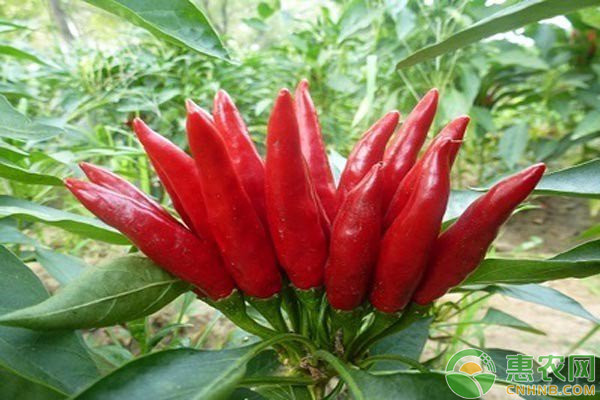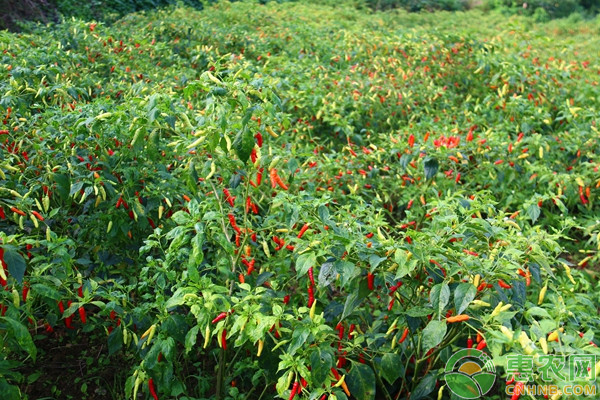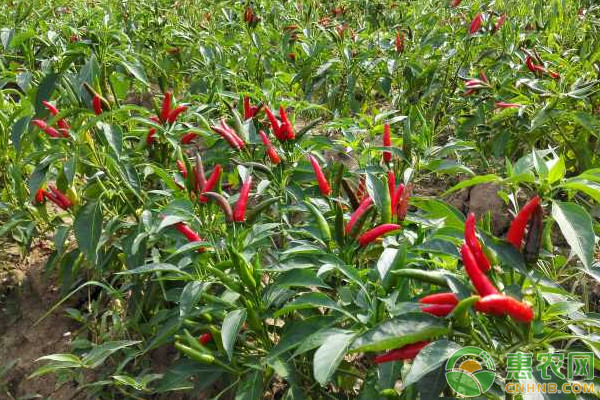Nowadays, people are pursuing healthy and healthy vegetables. Therefore, many farmers have begun to study how to plant pollution-free crops. If they want to plant pollution-free crops, they need to support pollution-free cultivation techniques. Let's take a look at a set of pollution-free production and cultivation techniques for greenhouse greenhouse peppers, taking Xiaxian as an example.

I. Cultivation techniques of wintering chillies in greenhouse
The winter greenhouse cultivation of peppers in the solar greenhouse focuses on solving the market supply before and after the Spring Festival and early spring and early summer.
Variety selection
Pepper varieties should be cold-resistant, early-maturing, disease-resistant, high-yield, thick and fleshy, suitable for close planting.
2. Colonization technology
(1) Site preparation of base fertilizer
The wintering period of the peppers is in the early winter season, the sunshine is short, and the time is tight. It is necessary to hurry and do the cleaning work after the land. Before fertilizing, it is necessary to carry out deep tillage and diversion, and then apply 4,000-5,000 kg of organic fertilizer per mu. After deep-drawing, the fertilizer and soil are completely mixed. If the amount of fertilizer can be increased, it can be applied by ditching on the planting row according to the row spacing.
(2) Greenhouse disinfection
According to the greenhouse space, 4 grams of sulfur per cubic meter plus 80% of dichlorvos 0.8 grams and 8 grams of sawdust, mix and ignite for a day and night, then open the air outlet and let the wind out.

(3) Colonization method
In the first half of the planting period, the warming temperature of the film will increase the ground temperature, and the temperature at the time of planting should not be lower than l5 °C. According to the width and narrow row (60×40) cm, the depth is 10 cm, and the bottom water is poured 2 to 3 days before the planting. After watering, it is sealed and not ventilated to increase the soil temperature. When the soil temperature is 10 cm, the temperature is not lower than 15 °C. It can be colonized.
Colonization should be selected on a sunny day, and preparations should be made in advance to end the planting work around 4 pm. The depth of planting is based on the height of the nursery, and should not be too deep. After planting, the planting water is poured once, and the mulch is covered after passing through the ditch.
The planting time is in the middle and late November. The planting density was planted at a plant spacing of 40 cm.
3. Management after planting
(1) After temperature management, in order to promote slow seedlings, it is necessary to maintain a high temperature and high humidity environment, and no ventilation within 7 days. After the slow seedlings, the temperature can be maintained at 26-28 °C before noon during the daytime, so that the photosynthesis of peppers can be smoothly carried out. After noon, the indoor temperature should be kept at about 28 °C to facilitate heat storage. The maximum daily temperature should not exceed 30 °C throughout the day, and the temperature of 30 °C should not exceed 3 hours during the day. Otherwise it will have adverse effects on fruit setting and fruit development.
The temperature at night, from the curtain to 24 o'clock at night, gradually decreased from 20 ° C to 15 ° C to promote the operation of photosynthetic products, and then the lowest temperature at the next day is 10 ° C. In short, in temperature management, we should pay attention to maintaining a high night temperature in the severe winter season.
After entering the spring, as the weather gets warmer, the amount of air is gradually increased. Open the top wind and shoulder wind to enhance convection. It is not necessary to cover the straw during the planting period in the open field. When the lowest external temperature is stable above t5 °C, the foot film is uncovered for day and night ventilation.
(2) Water and fertilizer management, during the slow seedling period, especially on the foliage after spraying, it is considered to be the secret to promote slow seedlings and increase yield; if it can be used for foliar spray fertilizer with 0.4% potassium dihydrogen phosphate , it is more conducive to rooting. After the seedlings are slowed down, according to the soil moisture, water can be watered in the shallow ditch under the film for 1-2 times, until the door pepper is swollen and grow, then choose the warm and sunny weather and the topdressing combined with formal watering. After that, according to plant growth and weather changes, watering was carried out by small water pouring. Generally, the soil surface is whitish, and water should be watered when the soil is dry within 10 cm. Pepper should not be flooded with large water, and it should not be uneven. Sudden drought and sudden watering may occur with falling flowers, falling fruits and fallen leaves. To this end, we must create a soil environment that does not lack water and loose ventilation to keep the soil moist. It is suitable for the growth and development of pepper.
The amount of fertilizer required for pepper seedlings is small, mainly concentrated in the fruiting period. When the door pepper grows to about 3 cm, the first top dressing is combined with watering. Each acre can be filled with 2000 kg of diluted manure or 8-10 kg of ammonium nitrate and potassium fertilizer. After that, the top dressing can be carried out according to the situation. ~ 4 water for a top dressing. Foliar fertilizers such as urea, Tianfengsu and Nongjiabao can also be sprayed on the foliar surface as an auxiliary measure.
The absorption of the three elements of the pepper-forming product requires about 5.19 kg of nitrogen, 0.7 kg of phosphorus and 6.4 kg of potassium per 1000 kg.

(3) After the plant is adjusted to enter the harvesting period, the branches and leaves are closed, and the ventilation and light transmission between the rows is poor. In order to improve this situation, it was found that after the result of the door pepper, the lateral branches with inward elongation and strong growth should be cut off as soon as possible. When the diameter of the young fruit of the secondary collateral branch on the main side branch reaches about 1 cm, it can be 4 to 6 leaves on these side branches according to the growth of the plant. In addition, the long branches that grow in the middle and late stages should also be removed.
(4) Preventing falling flowers and falling fruits from falling at an early stage due to low temperature, especially door peppers, such as a large number of falling flowers, not only the economic benefits are reduced, but also will cause trouble for future cultivation management. In order to prevent falling flowers, 2.4-D l5~20 mg/kg or tomato spirit 25-30 mg/kg can be used to smear flowers during flowering. However, due to the small flower of the pepper, the pedicel is short and inconvenient, the work efficiency is low, and the application in production is less. More is to improve the greenhouse lighting and insulation performance and increase heat storage to prevent falling flowers and fruit.
(5) Carbon dioxide fertilization Carbon dioxide fertilization not only supplements the problem of insufficient carbon dioxide in the solar greenhouse, promotes photosynthesis, can increase leaf thickening, early and prolong flowering, fruiting period and increase single fruit weight, and can prevent disease and disease Finally, the effect of increasing production and increasing value will be achieved.
In the method of use, it can be replenished for half an hour after clearing the curtain on a sunny day. The concentration is controlled at 800-1000 mg/kg. After 5 minutes of application, it is applied for another 5 minutes and then applied for 2 to 3 times. Also, ventilate when the indoor temperature rises above 30 °C.
(6) Harvesting peppers and peppers should be harvested as appropriate to avoid affecting plant growth. After that, in principle, the fruit is fully grown and the flesh is hardened and harvested. At the beginning of the harvest, it is flexible according to market conditions. In addition, the branches of the pepper are relatively brittle, and they cannot be smashed by hand when picking, so as to prevent the branches from breaking.
Friends who want to learn the pollution-free cultivation technology of pepper can first collect, more exciting content can also download the mobile phone Huinong APP, every day, anytime, anywhere to learn agricultural technology knowledge!
Tilmicosin Dosage,Tilmicosin Antibiotics,Tilmicosin Animal Health,Tilmicosin Pneumonia
Shandong Shengli Bioengineering Co., Ltd , https://www.shenglipharm.com